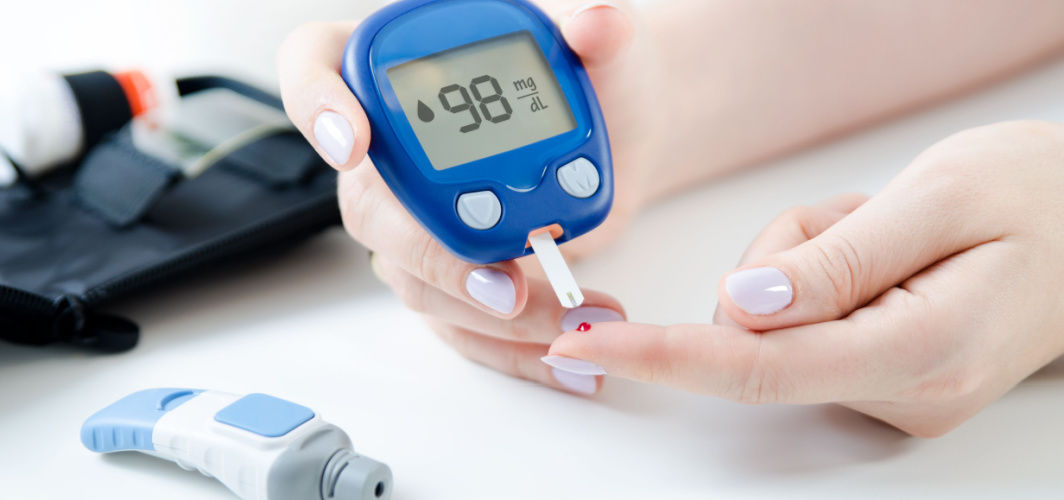Diabetes Management
Identifying Prediabetes Risk Factors
2 min read
By Apollo 24|7, Published on - 26 April 2024
Share this article
0
0 like
.jpg?tr=q-80)
Prediabetes may not get as much attention as diabetes, but it is a crucial stage in the health spectrum that cannot be ignored. It's a sign that your blood sugar levels are higher than normal, but not high enough to be classified as type 2 diabetes. However, prediabetes is reversible and being aware of the risk factors can help you take early action to prevent it from progressing into full-blown diabetes.
Underlying Factors for Prediabetes
Several factors could increase your risk of developing prediabetes. These include being overweight or having a large waist size, which increases insulin resistance and prevents your body from using insulin effectively.
Lifestyle Choices and Prediabetes
Poor dietary choices such as excessive intake of red and processed meats and smoking can also contribute to prediabetes. Additionally, physical inactivity makes it harder for your body to use insulin effectively. Therefore, regular physical activity is crucial in managing your blood sugar levels.
Age-related Risks and Hereditary Factors
As you age, particularly after 35 years, the risk of prediabetes increases. A family history of type 2 diabetes can also increase your susceptibility to prediabetes. Furthermore, individuals belonging to certain ethnic groups such as Hispanic, and Asian American have shown a higher predisposition towards prediabetes.
Medical Conditions
If you've had gestational diabetes or suffer from polycystic ovary syndrome (PCOS), your chances of developing prediabetes might be higher. Obstructive sleep apnea is another contributing factor to consider. High blood pressure, low levels of good cholesterol, high triglycerides, and metabolic syndrome also play a role in increasing the risk of prediabetes.
While some risk factors like age and family history cannot be changed, lifestyle modifications can significantly reduce your risk. Regular physical activity, a balanced diet, maintaining a healthy weight, and regular medical screenings can go a long way in managing prediabetes. Remember, early detection is key to preventing prediabetes from progressing to type 2 diabetes.
Diabetes Management
Consult Top Diabetologists
View AllLeave Comment
Recommended for you

Diabetes Management
Why is Frequent Urination a Sign of Diabetes Insipidus?
Frequent urination in diabetes insipidus results from ADH deficiency or resistance, disrupting water retention in kidneys. Unlike diabetes mellitus, it causes dilute urine production and increased thirst. Without sufficient ADH, dehydration occurs. Diagnosis requires specialized tests, and treatment typically involves hormone replacement medications. Prompt medical attention is crucial for effective management.
.jpg?tr=q-80)
Diabetes Management
Maize and Diabetes: Nutritional Benefits and Optimal Consumption Methods
Managing diabetes requires understanding the nutritional benefits of foods like maize. Low on the glycaemic index, rich in fiber, and packed with complex carbohydrates and essential vitamins, maize can be included in a diabetic diet. However, remember that portion control and cooking methods matter when incorporating maize into your meals. For personalized support on your diabetes management journey, consider the Apollo Super 6 program.

Diabetes Management
6 Tips To Prepare For Diabetes Test
Prepare for a blood sugar test: fast for 8-12 hours, follow provider's fasting advice, adjust medications with provider's guidance, stay hydrated with water, wear comfy clothes, avoid smoking. Test duration varies, discomfort minimal. Results interpreted based on normal, prediabetes, or diabetes ranges for A1C, fasting blood sugar, glucose tolerance, and random blood sugar tests.
Subscribe
Sign up for our free Health Library Daily Newsletter
Get doctor-approved health tips, news, and more.
Visual Stories

8 Fruits That are Incredibly Healthy for Diabetes
Tap to continue exploring
Recommended for you

Diabetes Management
Why is Frequent Urination a Sign of Diabetes Insipidus?
Frequent urination in diabetes insipidus results from ADH deficiency or resistance, disrupting water retention in kidneys. Unlike diabetes mellitus, it causes dilute urine production and increased thirst. Without sufficient ADH, dehydration occurs. Diagnosis requires specialized tests, and treatment typically involves hormone replacement medications. Prompt medical attention is crucial for effective management.
.jpg?tr=q-80)
Diabetes Management
Maize and Diabetes: Nutritional Benefits and Optimal Consumption Methods
Managing diabetes requires understanding the nutritional benefits of foods like maize. Low on the glycaemic index, rich in fiber, and packed with complex carbohydrates and essential vitamins, maize can be included in a diabetic diet. However, remember that portion control and cooking methods matter when incorporating maize into your meals. For personalized support on your diabetes management journey, consider the Apollo Super 6 program.

Diabetes Management
6 Tips To Prepare For Diabetes Test
Prepare for a blood sugar test: fast for 8-12 hours, follow provider's fasting advice, adjust medications with provider's guidance, stay hydrated with water, wear comfy clothes, avoid smoking. Test duration varies, discomfort minimal. Results interpreted based on normal, prediabetes, or diabetes ranges for A1C, fasting blood sugar, glucose tolerance, and random blood sugar tests.

